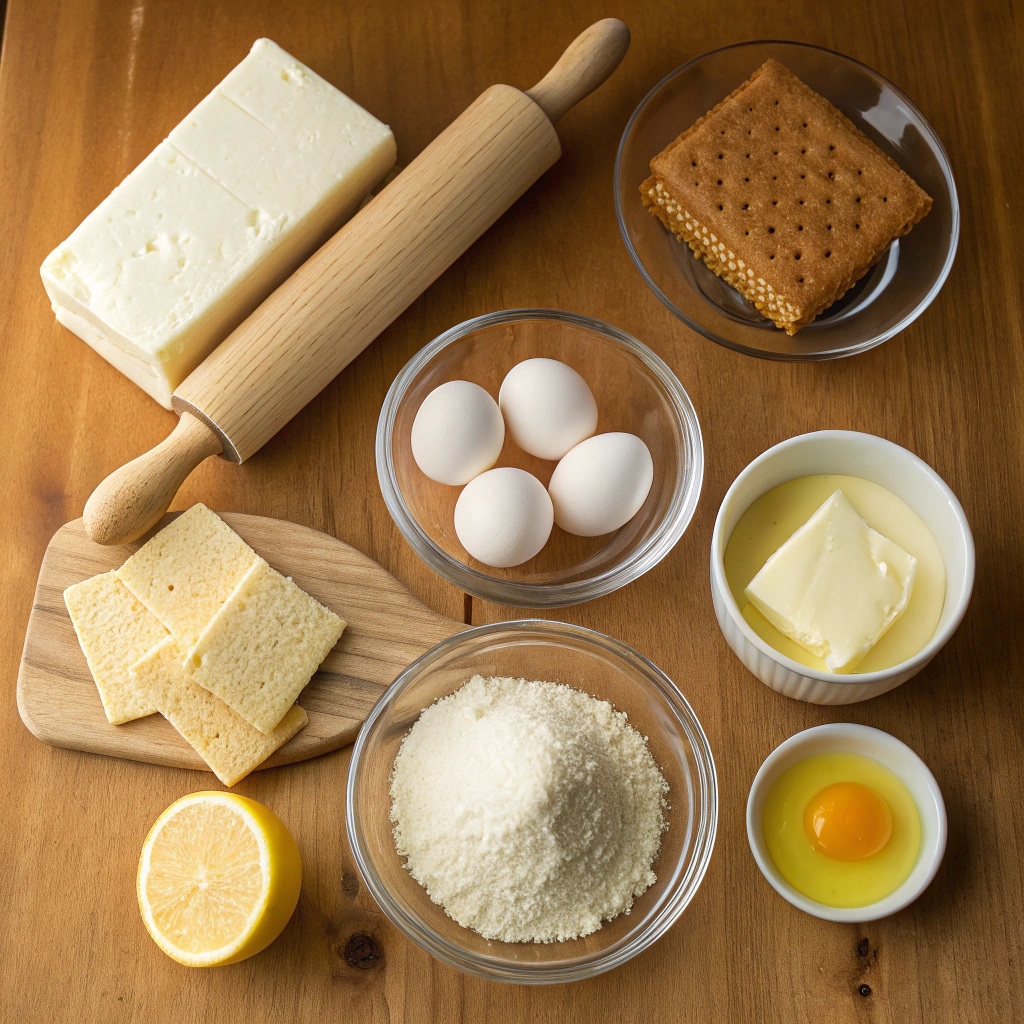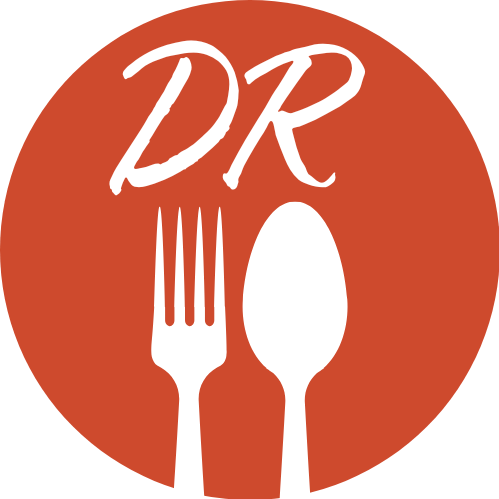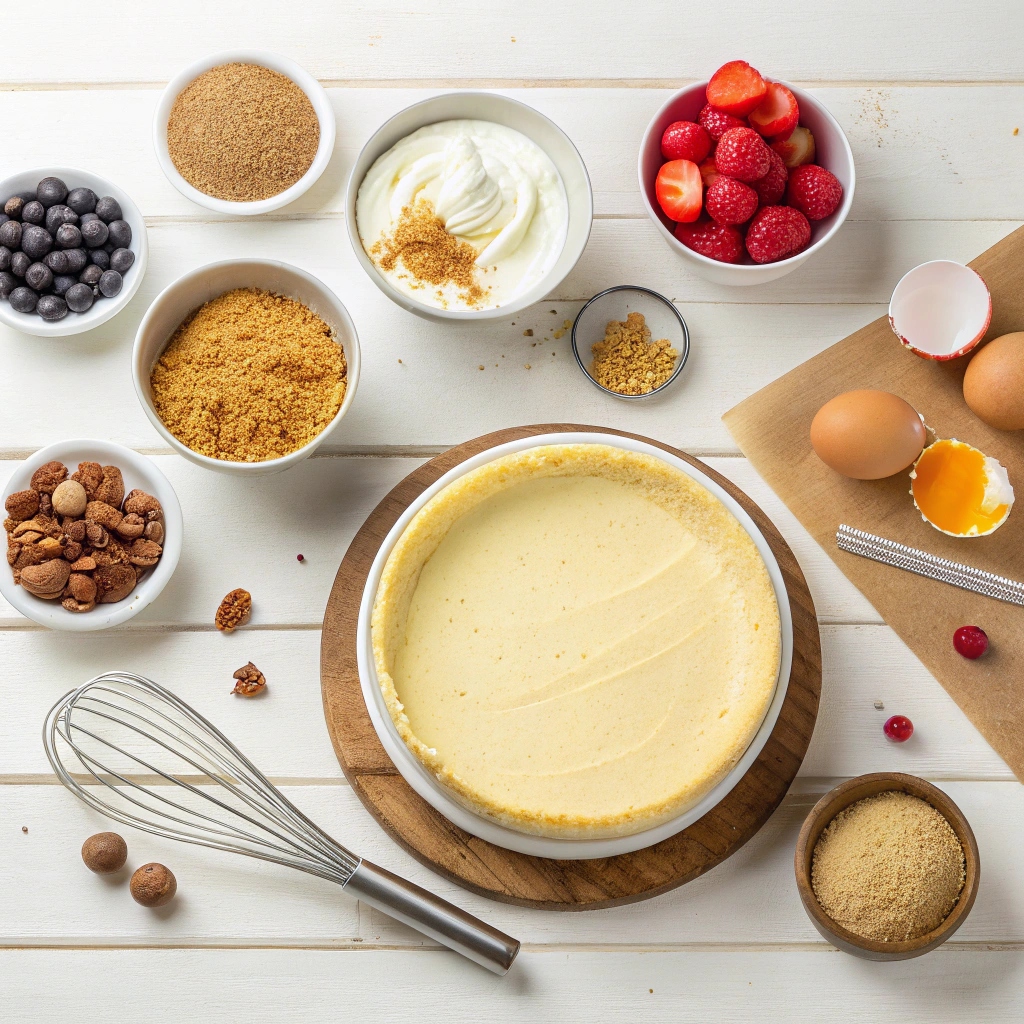The Allure of Cheesecake
Cheesecake is more than just a dessert—it’s an experience that combines creamy, dreamy textures with perfectly balanced flavors. But what makes it so universally adored? Let’s look at the ingredients and techniques that give this iconic dessert its irresistible appeal. 🎂✨
Cheesecake isn’t limited by geography or culture. It’s beloved worldwide for its ability to adapt to various tastes, occasions, and dietary preferences. Whether it’s the rich and dense New York-style cheesecake or the fluffy and jiggly Japanese version, there’s a cheesecake out there for everyone. And at its heart, the magic lies in its simple yet versatile ingredients.
Why Cheesecake Is a Beloved Dessert Worldwide
Why do people across the globe love cheesecake so much? The answer lies in its universal adaptability. Cheesecake effortlessly balances richness with sweetness, making it a dessert that appeals to people of all ages and preferences. From the classic flavors of vanilla and lemon to bold innovations like chocolate, matcha, and even savory options, cheesecake uniquely blended tradition with creativity.
But beyond flavor, cheesecake’s versatility also shines in its ability to complement any event. Hosting a fancy dinner party? A cheesecake topped with fresh berries makes the perfect centerpiece. Looking for a quick dessert fix? A no-bake cheesecake is your best friend. It’s this flexibility that keeps cheesecake timeless and beloved.
“Cheesecake is like a blank canvas, waiting to be painted with your favorite flavors and textures.”
The Versatility of Cheesecake Recipes
One reason cheesecake has stood the test of time is its ability to evolve. Each culture has put its own spin on this classic dessert, from creamy Italian ricotta cheesecakes to light Japanese soufflé versions. Plus, it’s a dessert that welcomes experimentation—think pumpkin spice in autumn, refreshing mango in summer, or decadent chocolate for those indulgent moments.
Cheesecake recipes also cater to dietary needs, with gluten-free crusts, vegan alternatives, and low-sugar options becoming increasingly popular. Whether baked or no-bake, traditional or modern, cheesecake’s versatility ensures it can satisfy every craving.
The Core Ingredients of Cheesecake
Cheesecake might look fancy, but its foundation lies in a handful of simple, everyday ingredients. Let’s break them down.

Cream Cheese: The Foundation of Cheesecake
Cream cheese is at the heart of any cheesecake. Its smooth, tangy richness gives cheesecake its signature flavor and texture. Cream cheese adds creaminess and balances the sweetness of other ingredients, creating a harmonious bite every time.
It’s best to go with full-fat varieties for the richest texture when selecting cream cheese. Avoid whipped cream cheese, as it contains air that can alter the consistency of your cheesecake. Some bakers opt for reduced-fat cream cheese for a healthier twist, though it may sacrifice a bit of that classic decadence.
Sugar: Adding Sweetness and Balance
Sugar does more than just sweeten your cheesecake—it also enhances the flavors of cream cheese, vanilla, and any added ingredients. Most recipes use granulated sugar, which dissolves smoothly into the batter for a consistent sweetness.
For those seeking a twist, you can replace white sugar with brown sugar for a deeper, caramel-like flavor. Natural sweeteners like honey, maple syrup, or agave nectar work well for a slightly healthier version.
Eggs: Creating Structure and Creaminess
Eggs play a critical role in baked cheesecakes. They act as a binding agent, helping the ingredients merge into a cohesive, creamy filling. Additionally, eggs contribute to the velvety texture of the cheesecake by adding structure without making it dense.
To avoid overmixing and incorporating too much air (which can lead to cracks), always add eggs one at a time, mixing gently until just combined. For egg-free recipes, substitutes like silken tofu or flaxseed meal can mimic their binding properties.
Flavorings: Vanilla Extract, Lemon Zest, and Other Enhancements
What sets an exceptional cheesecake apart from a good one? Flavorings! Vanilla extract is the most common addition, lending a warm, fragrant undertone that pairs beautifully with cream cheese. Lemon zest or juice is another popular choice, adding a refreshing brightness that cuts through the richness.
For those looking to get creative, try incorporating coffee, almond extract, or spices like cinnamon and nutmeg. These small additions can transform a basic cheesecake into something extraordinary.
The Crust: An Essential Base for Cheesecake
No cheesecake is complete without its crust. The crust perfectly contrasts the creamy filling, adding a satisfying crunch and an extra layer of flavor.
Graham Cracker Crust: The Classic Choice
When you think of cheesecake crusts, graham crackers likely come to mind. This classic base is loved for its buttery, slightly sweet flavor that complements the filling without overpowering it. Made with crushed graham crackers, melted butter, and a touch of sugar, it’s easy to prepare and holds up beautifully when baked.
Here’s a simple table for a basic graham cracker crust:
| Ingredient | Quantity |
|---|---|
| Graham cracker crumbs | 1 ½ cups |
| Melted butter | 6 tablespoons |
| Sugar | ¼ cup |
Alternatives to Graham Crackers: Oreos, Digestive Biscuits, and More
While graham crackers are iconic, there’s no rule saying you have to stick with them. Oreo cookies are a popular alternative, especially for chocolate lovers. Just crush the cookies—filling included—and mix with melted butter for a rich, chocolatey base.
Digestive biscuits, gingersnaps, and even pretzels are other fantastic options, each bringing its own unique flavor and texture to the table. These alternatives allow you to customize the crust to match the flavor of your cheesecake.
Gluten-Free and No-Crust Options
For those avoiding gluten, there are plenty of crust options available. Crushed nuts like almonds, pecans, and walnuts make a crunchy base. Combine them with butter and sugar, and you’re good to go.
Prefer to skip the crust altogether? No problem! Many cheesecakes can be baked crustless, allowing the creamy filling to shine on its own. This minimalist approach is especially popular for no-bake cheesecakes.
Variations in Cheesecake Ingredients
Cheesecake may have a universal appeal, but its ingredients and methods vary greatly depending on the type, region, and creative twists added to the recipe. Let’s explore the diverse world of cheesecake ingredients and how they shape this beloved dessert. 🎂✨
Baked vs. No-Bake Cheesecake: Ingredient Differences
The primary distinction between baked and no-bake cheesecakes lies in their preparation and the role of certain ingredients:
- Baked Cheesecake:
Baked cheesecakes rely on eggs to create a dense yet creamy texture. During baking, the eggs coagulate, giving the filling its structure. Baked versions typically include cream cheese, sugar, eggs, and sometimes sour cream or heavy cream for added richness. They’re usually baked in a water bath to ensure even heat distribution. - No-Bake Cheesecake:
No-bake cheesecakes skip the eggs entirely, relying on gelatin, whipped cream, or cream cheese alone to set the filling. These cheesecakes are lighter and mousse-like, perfect for hot weather when turning on the oven feels like a chore. They also allow for more flexibility in experimenting with flavors and textures.
“The choice between baked and no-bake cheesecake often comes down to preference—rich and dense or light and airy.”
Regional Variations: New York, Italian, and Japanese Cheesecake
Cheesecake has traveled the world, and each region has left its unique mark on this dessert. Here’s a quick look at three popular styles:
- New York Cheesecake:
The epitome of indulgence, New York cheesecake is known for its dense, rich texture. Made with cream cheese, heavy cream, and eggs, it’s often baked without a water bath for a slightly firmer structure. The crust is typically graham cracker-based, and the flavor is tangy yet sweet—a true classic. - Italian Cheesecake:
Italian cheesecake replaces cream cheese with ricotta or mascarpone, giving it a slightly lighter, grainier texture. It’s often less sweet and includes citrus zest or almond flavors, reflecting its Mediterranean roots. - Japanese Cheesecake:
Also called “soufflé cheesecake,” this version is light, fluffy, and jiggly. Made by folding whipped egg whites into the batter, Japanese cheesecake has an airy texture that melts in your mouth. It’s perfect for those who want a less dense dessert.
Unique Additions: Fruits, Chocolates, and Spices
Cheesecake’s adaptability makes it the perfect canvas for all kinds of flavors. Here are some popular additions:
- Fruits: Strawberries, blueberries, mangoes, and cherries are popular toppings, but fruit can also be blended into the filling for a burst of natural sweetness.
- Chocolates: Cocoa powder, melted chocolate, or even chocolate chips can turn a traditional cheesecake into a chocolate dream.
- Spices: Cinnamon, nutmeg, and cardamom add warmth and complexity, especially in holiday-inspired cheesecakes like pumpkin spice.
These variations ensure there’s a cheesecake for every season and occasion.
Common Problems with Cheesecake Ingredients and Solutions
Even with the best ingredients, making cheesecake can sometimes feel like solving a puzzle. Let’s address some common issues and how to tackle them.
Achieving the Right Consistency: Avoiding Overmixing or Undermixing
Mixing the batter just right is the key to a perfect cheesecake texture. Overmixing or undermixing can both lead to problems:
- Overmixing:
Too much air in the batter can cause the cheesecake to rise unevenly during baking, leading to cracks. To avoid this, mix ingredients at a low speed and stop as soon as they’re combined. - Undermixing:
If the ingredients aren’t fully incorporated, the filling might have lumps. Ensure the cream cheese is softened and at room temperature for smoother blending.
Preventing Cracks: Managing Temperature and Baking Techniques
Cracks on the surface of a cheesecake are a common issue but can be avoided with a few simple adjustments:
- Use a Water Bath:
This ensures even heat distribution, preventing the filling from drying out and cracking. - Don’t Overbake:
A cheesecake is done when the edges are set, but the center still jiggles slightly. Overbaking can dry out the filling and cause cracks. - Cool Gradually:
Sudden temperature changes can lead to cracks. Allow the cheesecake to cool in the oven with the door ajar before transferring it to the fridge.
“Cracks in a cheesecake may add character, but mastering the baking process ensures a flawless finish.”
Balancing Sweetness and Flavor: Tips for Ingredient Ratios
Getting the flavor balance just right is critical to a great cheesecake. Here are some tips:
- Sweetness:
If you prefer a less sweet cheesecake, reduce the sugar slightly and add more natural flavoring, like vanilla or lemon zest. - Tanginess:
Sour cream or yogurt can enhance the tanginess of the filling, balancing out the sweetness. - Experiment with Flavors:
Try adding a pinch of salt or spices like cinnamon to bring out the richness of the cream cheese.
How to Customize Cheesecake Ingredients
One of the reasons cheesecake is such a beloved dessert is its adaptability. With a little creativity, you can customize the ingredients to suit your dietary needs, flavor preferences, or event theme. Let’s explore some ways to make your cheesecake truly unique! 🎂✨
Cheesecake Ingredients: Cream Cheese Substitutes for Lighter or Vegan Options
Cream cheese is the foundation of traditional cheesecake, but there are plenty of substitutes for those seeking a lighter or dairy-free option:
- Greek Yogurt or Skyr: These add tanginess and creaminess while reducing calories and fat. Use them as a partial replacement or a complete substitute for cream cheese.
- Silken Tofu: A vegan-friendly option, silken tofu creates a smooth texture similar to cream cheese. Pair it with lemon juice for added tang.
- Cashew Cream: Soaked and blended cashews mimic the creaminess of traditional cheesecake. They’re perfect for vegan recipes and can be flavored with vanilla or citrus.
These alternatives not only accommodate dietary restrictions but also allow for lighter, healthier variations of cheesecake.
Cheesecake Ingredients: Exploring Sweeteners Like Honey and Maple Syrup
Sugar is a key ingredient in cheesecake, but swapping it out can add depth and character to your dessert:
- Honey: Adds a floral sweetness and pairs beautifully with fruits or nuts.
- Maple Syrup: Perfect for fall-inspired cheesecakes, maple syrup brings a rich, earthy sweetness.
- Sugar Alternatives: For those watching their sugar intake, try stevia, erythritol, or monk fruit sweetener. These options maintain sweetness without the added calories.
When substituting sweeteners, remember that liquid alternatives like honey and maple syrup may require adjustments to other liquid ingredients in the recipe.
Cheesecake Ingredients: Crafting Unique Crusts with Nuts or Granola
While graham cracker crusts are classic, experimenting with different bases can elevate your cheesecake:
- Nuts: Ground almonds, pecans, or walnuts mixed with butter and sugar create a flavorful, crunchy crust.
- Coconut: Shredded coconut adds a tropical vibe and pairs wonderfully with mango or pineapple cheesecake.
- Granola: For a wholesome twist, use granola as a crust. It’s great for breakfast cheesecakes or no-bake variations.
Customizing the crust allows you to match the base to your filling, creating a cohesive and creative dessert.
Frequently Asked Questions About Cheesecake Ingredients
Cheesecake ingredients might seem straightforward; however, there’s plenty of room for experimentation and adaptation. Below, we’ll answer some commonly asked questions to help you perfect your cheesecake.
Can You Make Cheesecake Without Dairy or Eggs?
Yes! With the right substitutions, dairy-free and egg-free cheesecakes are entirely possible. Although traditional recipes rely on cream cheese and eggs, several alternatives can achieve a similar texture and flavor.
- Dairy-Free Options: Instead of cream cheese, you can use vegan cream cheese, cashew cream, or silken tofu. Additionally, coconut milk or almond milk works well for added creaminess.
- Egg-Free Substitutes: To maintain structure, replace eggs with flaxseed meal, aquafaba (chickpea water), or a commercial egg replacer. These ingredients help bind the filling while keeping the texture smooth.
By making these simple swaps, you can create a cheesecake that’s just as rich and delicious as the traditional version.
What Are the Best Cream Cheese Alternatives?
While cream cheese is the foundation of most cheesecakes, it’s not the only option. If you’re looking for a substitute, consider these alternatives:
- Ricotta Cheese: Commonly used in Italian cheesecakes, ricotta has a lighter texture and a slightly grainy consistency.
- Mascarpone Cheese: This Italian cheese is even richer and creamier than cream cheese, adding a luxurious feel to your dessert.
- Cottage Cheese: Blending cottage cheese creates a smooth filling, making it a great choice for low-fat or high-protein cheesecakes.
Since each substitute affects the texture differently, it’s a good idea to experiment and find the one that best suits your taste.
“Experimenting with different cheeses can lead to exciting new textures and flavors in your cheesecake.”
Is It Possible to Make Cheesecake Gluten-Free?
Absolutely! Cheesecake is one of the easiest desserts to make gluten-free. The key is choosing the right crust and flour substitutes.
- Crust Alternatives: For a minimalist approach, try using gluten-free cookies, crushed nuts, or even a crustless version instead of graham crackers.
- Flour Substitutes: If your recipe calls for flour (such as in Japanese cheesecake), opt for almond flour, coconut flour, or a gluten-free baking mix.
By making these adjustments, you can enjoy a delicious cheesecake safe for those with gluten sensitivities—without compromising flavor or texture.
How Can You Incorporate Seasonal Fruits Into Cheesecake?
Seasonal fruits are a fantastic way to add color, flavor, and freshness to your cheesecake. Depending on the fruit and your desired presentation, several ways exist to incorporate them.
- Toppings: For a vibrant finish, arrange fresh fruits like strawberries, blueberries, or peaches on the cheesecake.
- Swirls: Blend fruits into a puree and swirl them into the batter before baking for a marbled effect.
- Flavoring the Filling: Add finely chopped fruits or fruit puree directly into the batter for a natural sweetness.
These methods enhance the flavor and make your cheesecake look visually stunning—perfect for any special occasion!
Conclusion: The Magic of Cheesecake Ingredients
The beauty of cheesecake lies in its simplicity and versatility. With just a few core ingredients—cream cheese, sugar, eggs, and a crust—you can create a rich and customizable dessert. However, if you’re feeling adventurous, you can easily experiment with different sweeteners, crusts, or fruit additions to craft your own unique version.
The possibilities are endless, whether you prefer a traditional New York cheesecake or a lighter, fruit-infused alternative. So, grab your whisk, gather your ingredients, and start baking—because every cheesecake tells a story, and yours is just waiting to be made. 🍰✨
Looking for more indulgent cooking ideas? Check out:
Can You Make Cheesecake in a Cake Pan? A Complete Guide for Success

